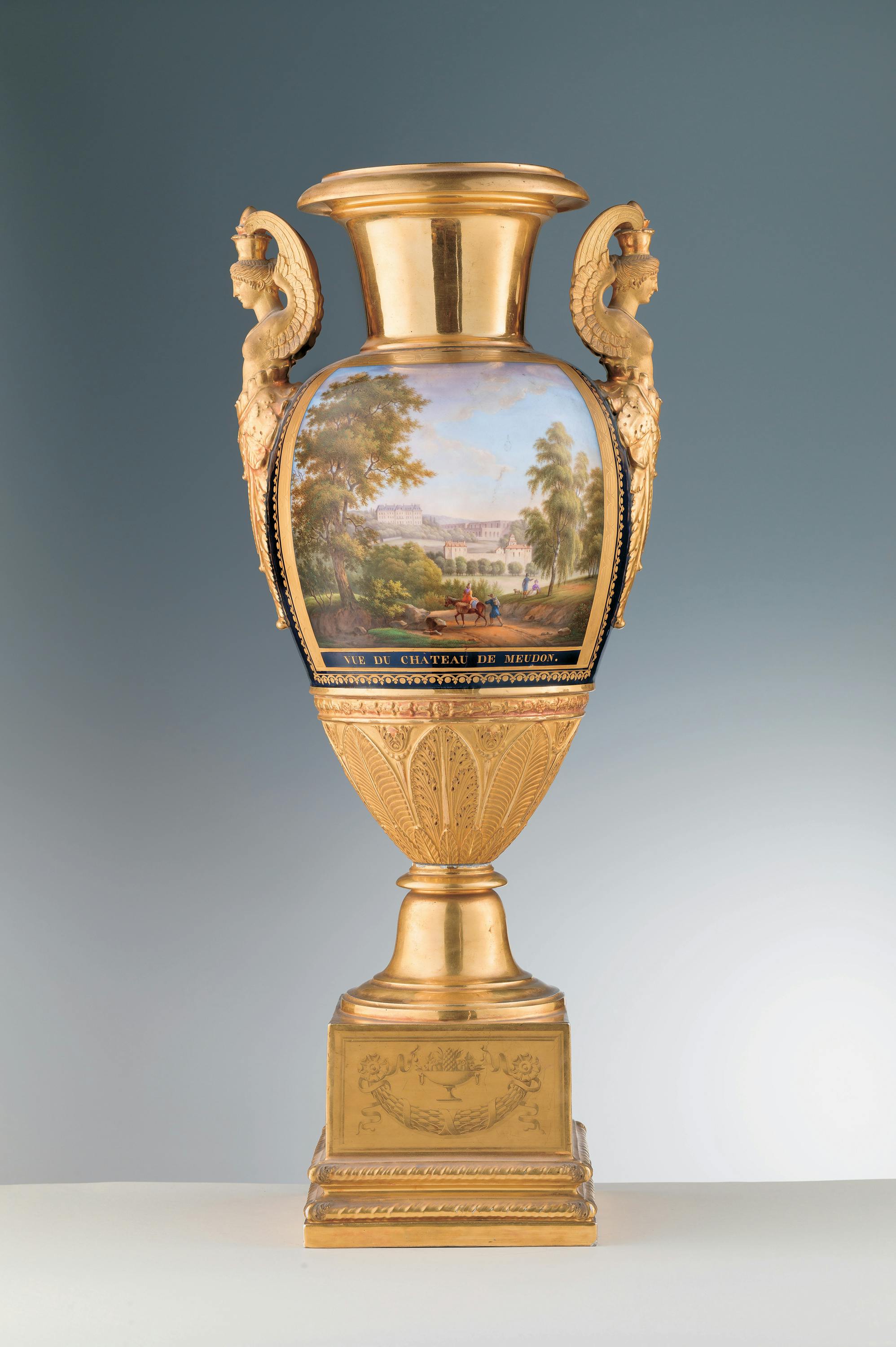Pair of bleached vases
Nast Factory
'Le Tasse chez sa sœur'; 'Le Tasse et Eleonore d'Est'; 'Vue du château de Meudon';
These vases have been traced back to the production of Nast Factory, which boasts a very similar model. In 1783, the Austrian Jean-Népomucène-Herman Nast, after a stint at the Vincennes Factory, founded a porcelain factory in Paris on Rue Popincourt, which he moved to Rue des Amandiers the following year. The business grew very early on and the well-known chemist of the time Nicolas-Luois Vauquelin took over the management of the factory's laboratory, which counted on the collaboration of the sculptors Augustin Pajou and Klagman and the painters Camille Flers, Cabat, Parmentier and Schilt. In 1810, Nast also patented a technique for making relief decorations using a wheel called a 'molette'. At the Industrial Exhibition of 1806, the factory was awarded a silver medal in recognition of the excellent level of quality achieved.
These ovoid-shaped specimens are fixed on a high plinth, which gives them impetus and elegance, and feature loops modelled like Nike, winged victories combed in the antique style. Their presence, together with the use of shiny and opaque gold covering the surface of the vases, alludes to the luxury of the courts, which these models were designed for. This pair came to the Palazzo Pitti from the Villa di Marlia in Lucca, while there are records of another similar pair purchased by Louis XVIII at the aforementioned 1823 Louvre Exhibition.
The bodies of the vases are decorated with a scene depicting an episode from the life of the poet Torquato Tasso on the main side, enriched by a precious gilded frame, while on the other is a view of the Castle of Meudon and a view of a convent in Genoa. The depictions of Tasso reading a poem to Leonora d'Este and Tasso at his sister's house are copied almost exactly from two paintings by Jean-Louis Ducis executed in 1812 and exhibited at the Salon of 1814. He was a pupil of Jacques-Louis David, from whom he learnt history painting, which he combined with portraiture and the depiction of mythological scenes. Interestingly, his adherence to the 'Troubadour' style can be seen in the two aforementioned canvases that belonged to Louis Bonaparte's wife, Hortense Eugénie Cécile, which he took with him during his exile in Arenenberg, where they are still kept in the present-day Musée Napoléon Thurgovie.
